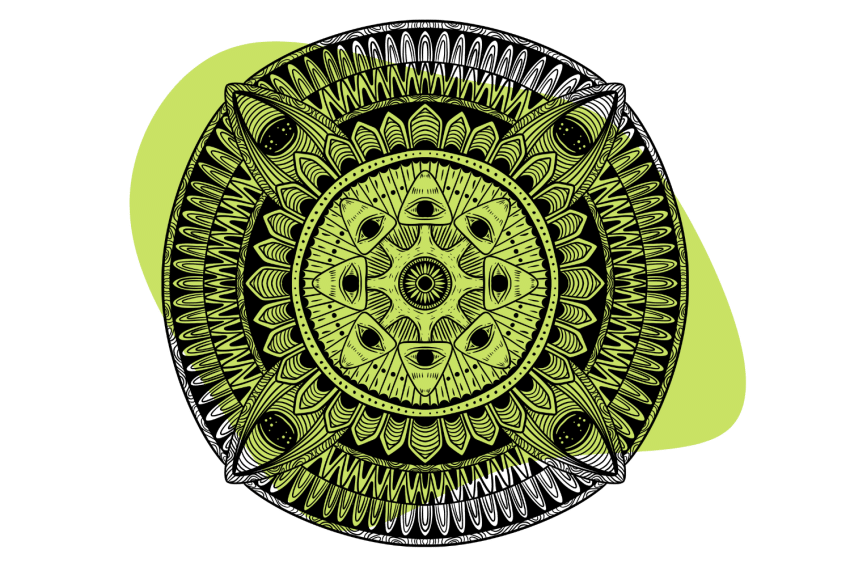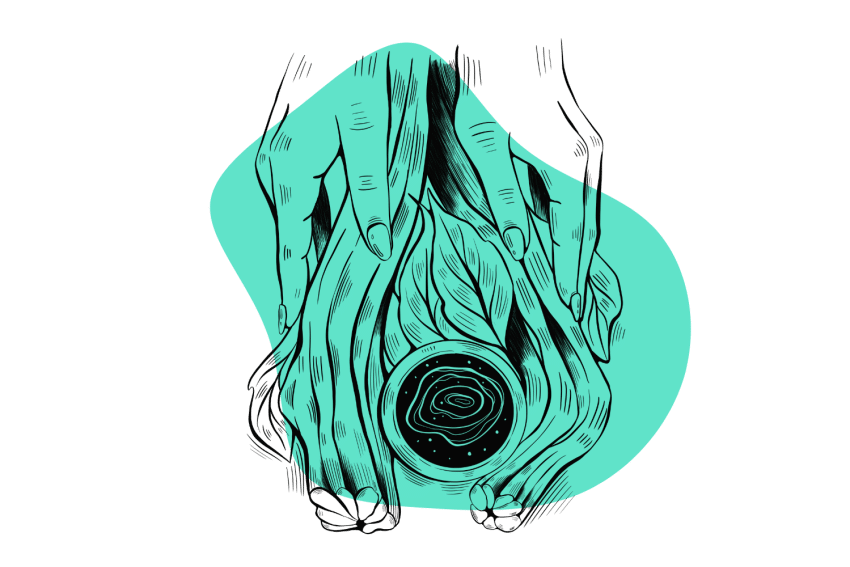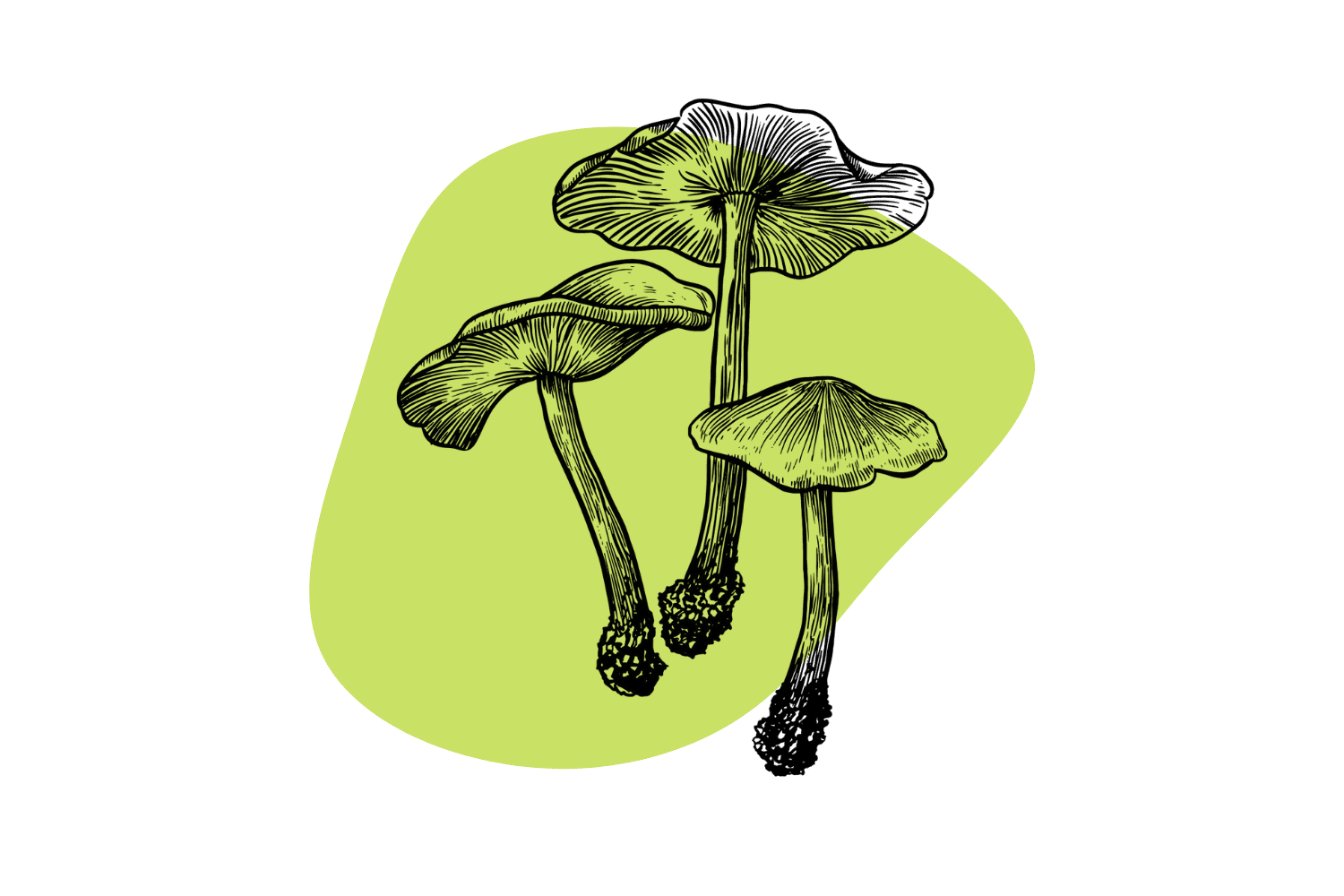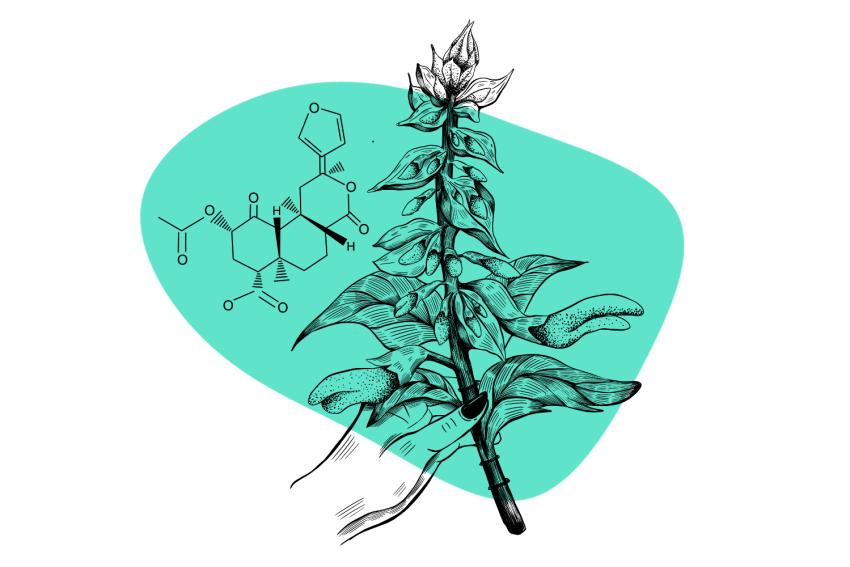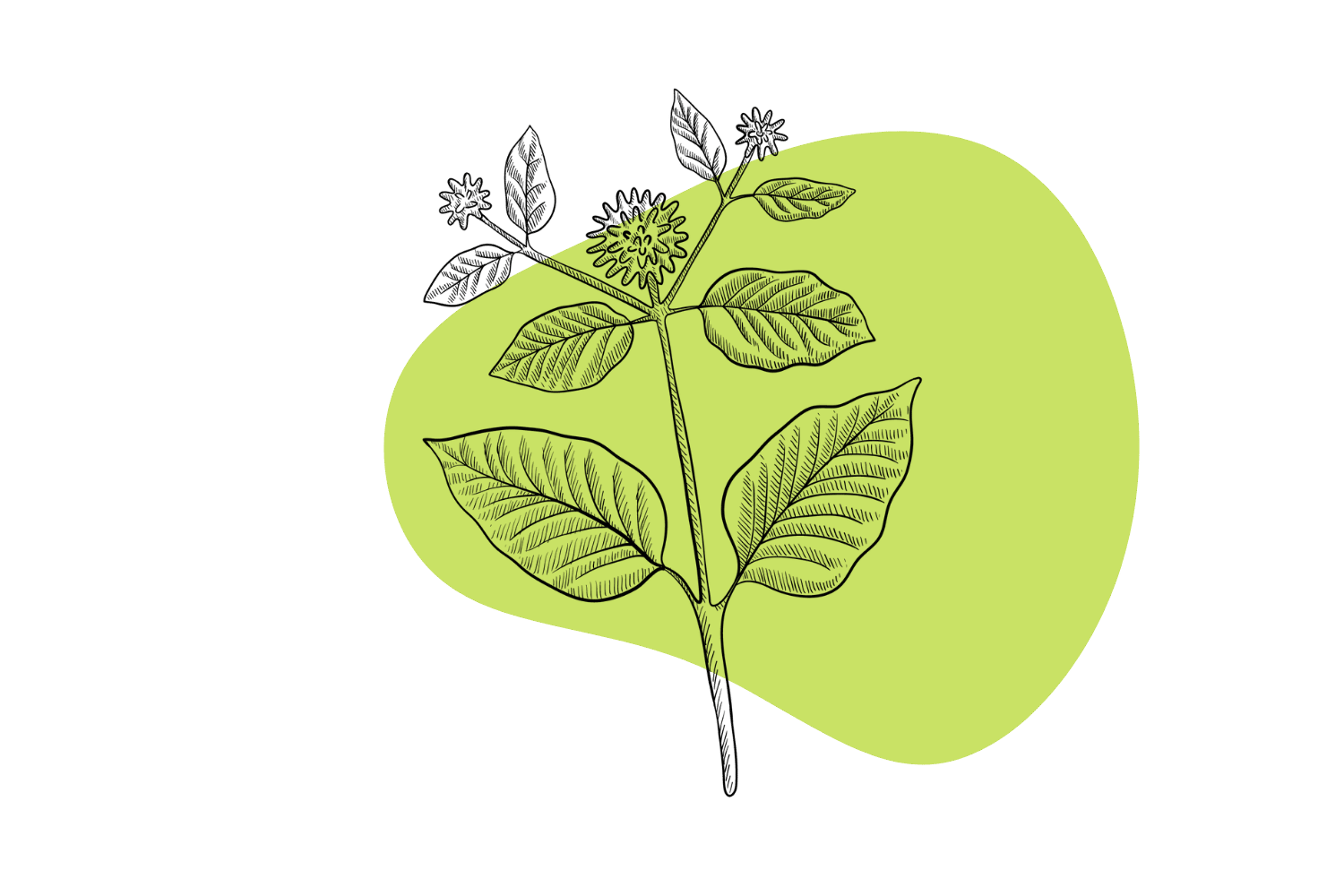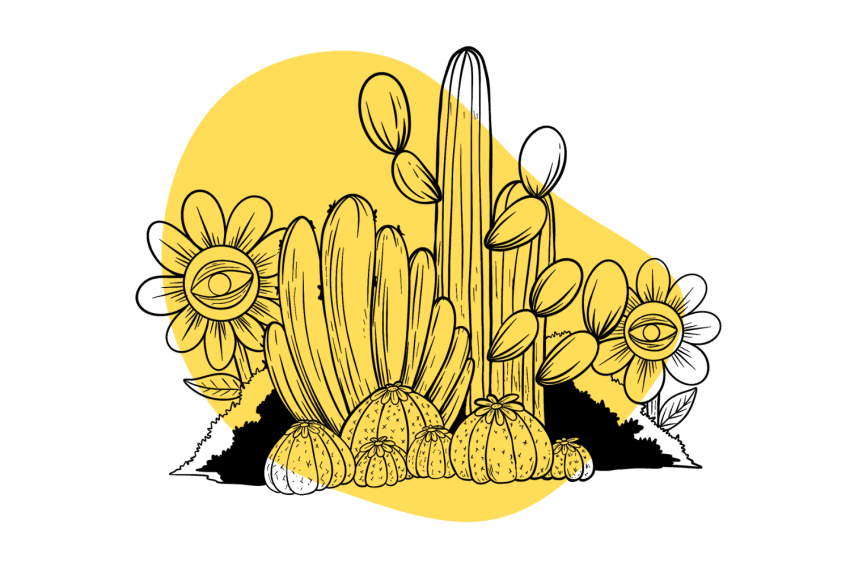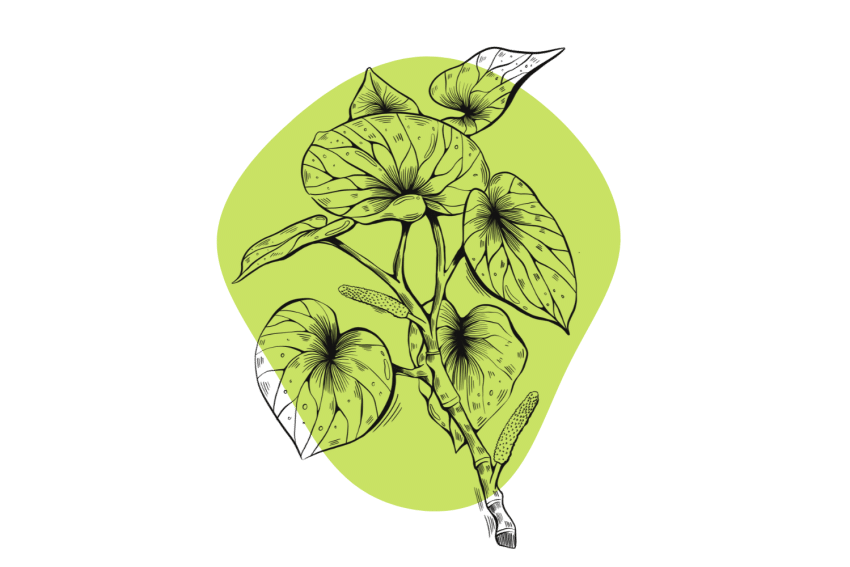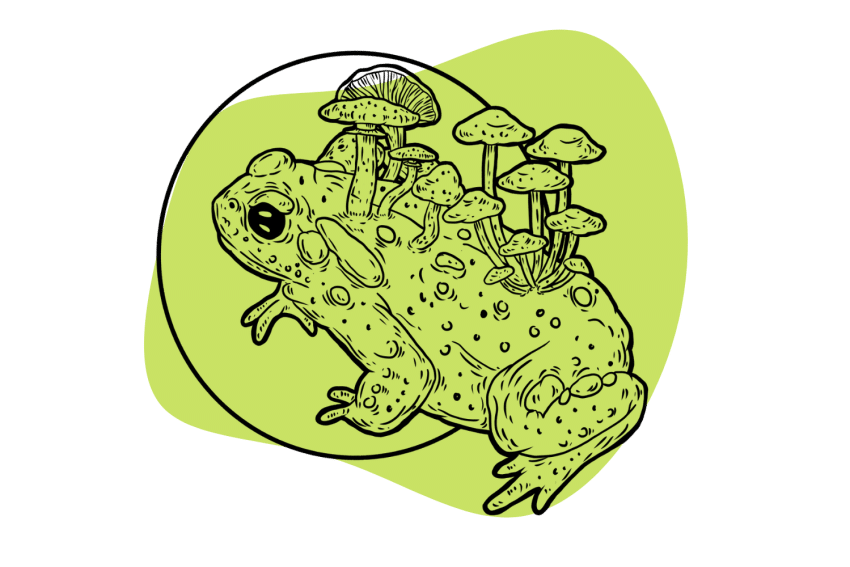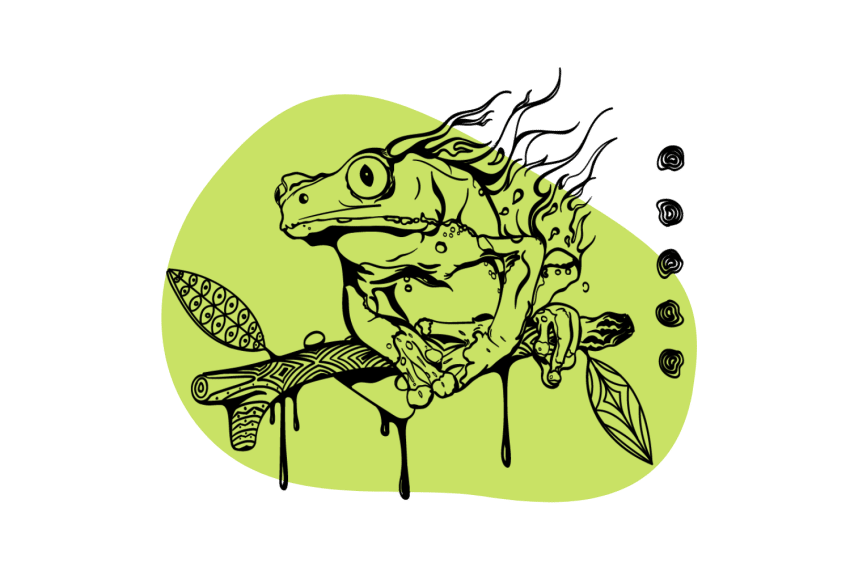Brugmansia: A Stunning Flower With a Sinister Reputation
Brugmansia is a beautiful decorative tree from Colombia. Its seeds are a powerful, deliriant psychedelic with a dark side that sends most psychonauts packing.
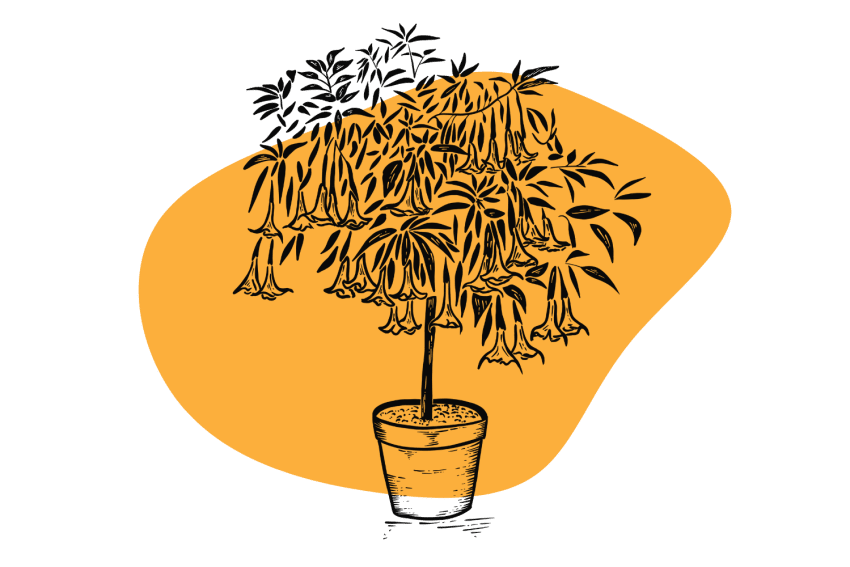
Devil’s Breath, one of the common names for Brugmansia suaveolens, accurately depicts the risk associated with consuming it.
While this plant has traditional uses, many are terrifying or only used by experienced shamans.
Trip reports from psychonauts daring enough to use this plant are almost always nightmarish — sometimes even deadly.
I want to introduce the infamous “Borracherro tree.”
What is Brugmansia (Borracherro)?
Brugmansia is a shrub that produces beautiful, ornamental flowers. Many people plant these trees for their beauty around gardens, parks, and city streets. It’s believed that no more brugmansia plants are left in the wild — all of them exist in cultivation.
These flowers give it one of its other nicknames — Angel’s Trumpets. The giant, colorful flowers hang down to form a trumpet-like shape.
This name goes against most of the folklore around the plant, which tends to associate it with the devil. One theory for the origin of this common name is that it looks like a trumpet and will cause the user to “meet the angels.”
It’s indeed very deadly. Just 50 mg of the active ingredient, scopolamine, is enough to kill a full-grown adult.
Brugmansia is closely related to the datura plant and belongs to the deliriant class of drugs. As the name suggests, these compounds cause a person to become delirious and act out their delusions in the real world. It causes users to lose the ability to interface with reality — they see things that aren’t there.
Unlike conventional hallucinogenics like LSD, magic mushrooms, or ayahuasca, people under the effects of deliriants don’t know they’re hallucinating.
Reports of how this manifests can range from eating phantom food or smoking phantom cigarettes to engaging in entire conversations with people that aren’t there.
How Does Brugmansia Work?
Currently, research has uncovered 59 alkaloids, 50 volatile compounds, and at least 25 other components of the plant [1]. The main alkaloids responsible for the characteristic effects of this plant are scopolamine, atropine, and hyoscyamine — all of them tropane alkaloids similar to those found in datura, mandrake, and belladonna.
Scopolamine, atropine, and hyoscyamine may have applications in medicine but only in very small doses. All of these alkaloids cause delirium and death in high enough doses.
Though all three are immensely useful in medicine without large, adverse reactions, together, it’s a recipe for disaster. The hallucinations felt by all of this can feel like a waking nightmare and, in extreme cases, can precede death.
Let’s dive into each of these a bit further:
1. Scopolamine
The World Health Organization has scopolamine on its list of essential medicines thanks to its anti-nausea effects. It’s been around for a long time, and this has been one of the largest uses of the drug.
Scopolamine is a drug with limits; overdose is possible and has happened before [2]. It’s important to make sure you don’t overdo it.
One of the most concerning effects of scopolamine is its ability to remove one’s sense of free will. In a state of scopolamine intoxication, they become open to suggestions. Thieves are alleged to dose people with the drug and ask them to give up their belongings or pull money out of a nearby ATM. Victims comply without appearing intoxicated.
For the same effect, scopolamine is often used as a date rape drug. The memory loss from scopolamine could be due to its nature as an antagonist — meaning it stops the activity — of the muscarinic acetylcholine receptor (mAChR) [3].
One of the responsibilities of the mAChR receptor is to help with memory and neuroplasticity. This binding also likely leads to the deliriant effects of the drug, though the exact mechanism for this is yet unknown.
Scopolamine is also an antagonist of the 5-HT3 receptor [4], which makes it useful in preventing nausea and vomiting [5]. This is the most common use of the drug, especially after surgery.
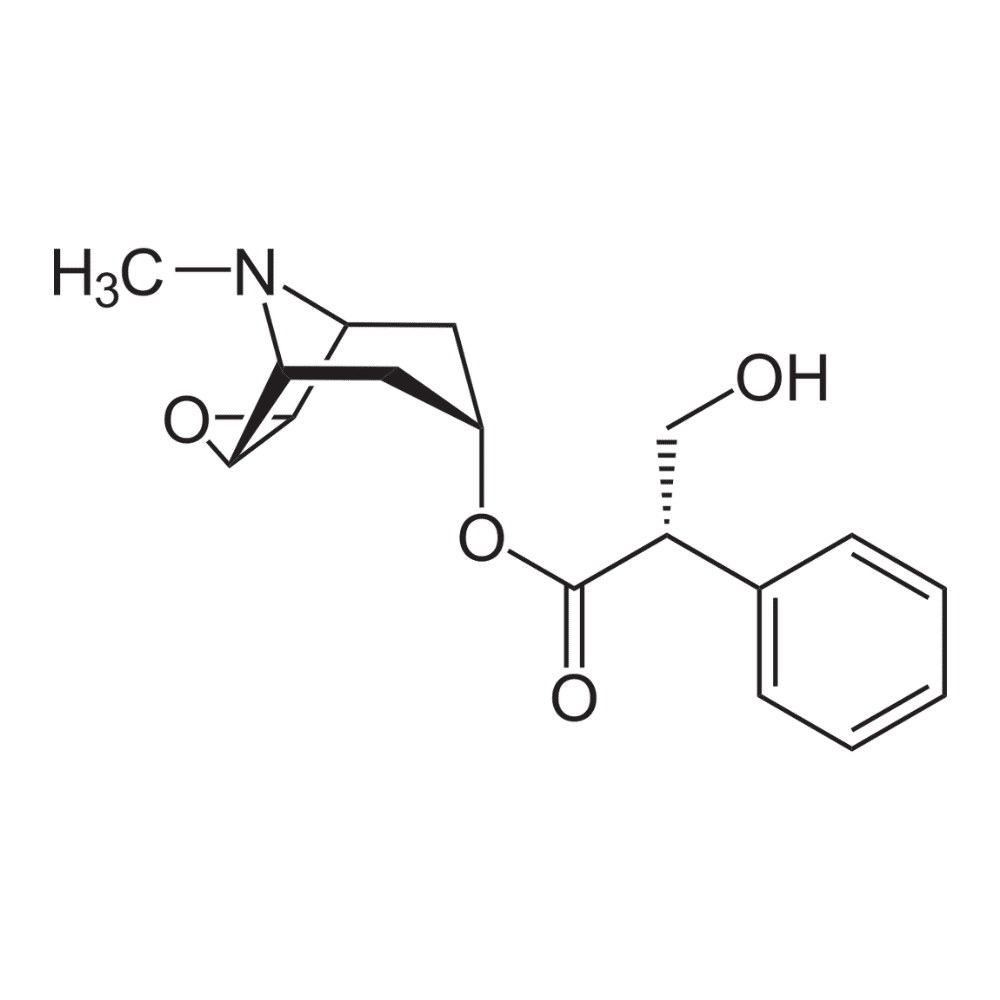
2. Atropine
This alkaloid has a place in medicine as well. Physicians often prescribe atropine to decrease saliva production and increase heart rate [6]. For the most part, however, the main reason doctors use atropine is to prevent certain types of poisoning.
While it’s not the primary compound in brugmansia, it still plays an important role in the plant’s overall effects. Atropine interacts with the same receptors as scopolamine, competing for the spot [3, 4].
Additionally, like scopolamine, overdosing on this drug can prove fatal. Anytime something increases your heart rate, it’s important to limit how much of it you take — the heart can only beat so fast before it becomes damaged.
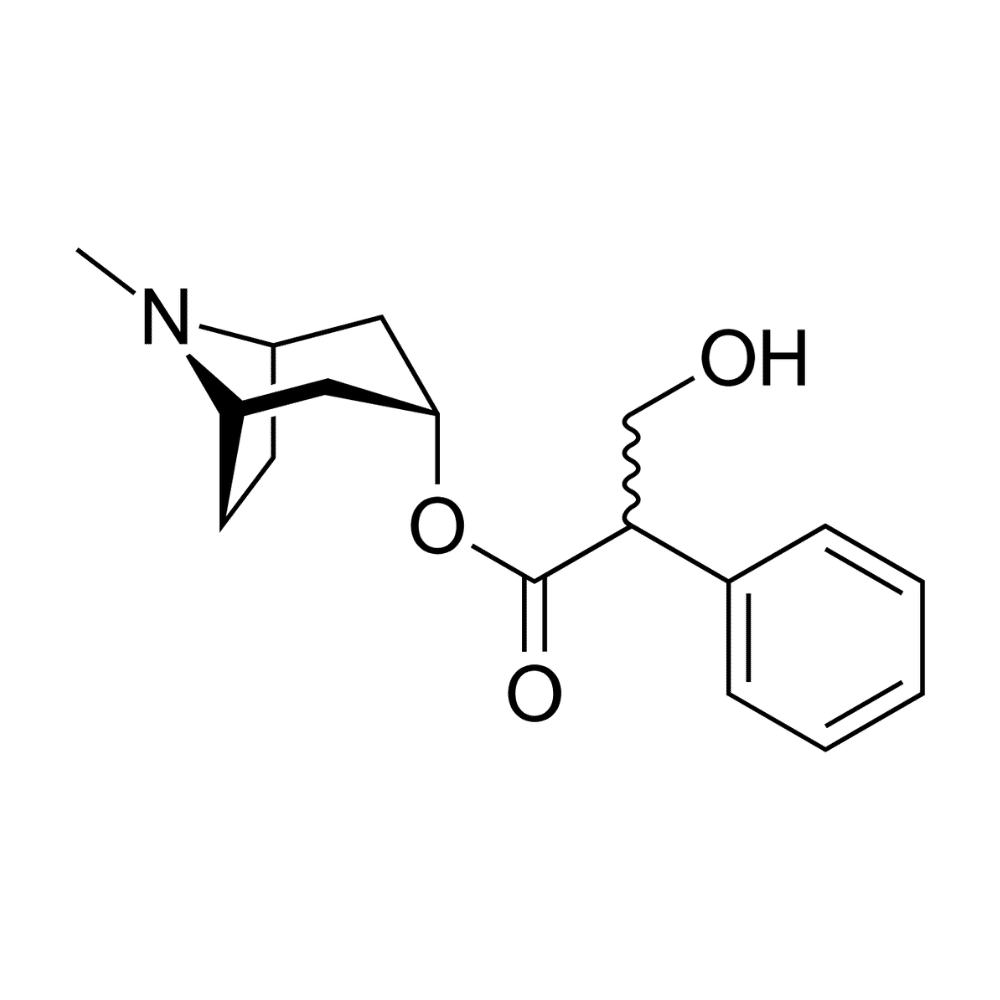
3. Hyoscyamine
The primary use of hyoscyamine in a medical context is to treat the symptoms of gastrointestinal tract disorders. Like the others, hyoscyamine is a competitive antagonist of the mAChR receptors, and doctors may use it to treat mild nausea and hyperactive bladder.
As with the others, overdosing on hyoscyamine is fatal. Hyoscyamine is also an active ingredient in the plant, with at least one report of a person using large doses of this drug to terrifying effect [7].
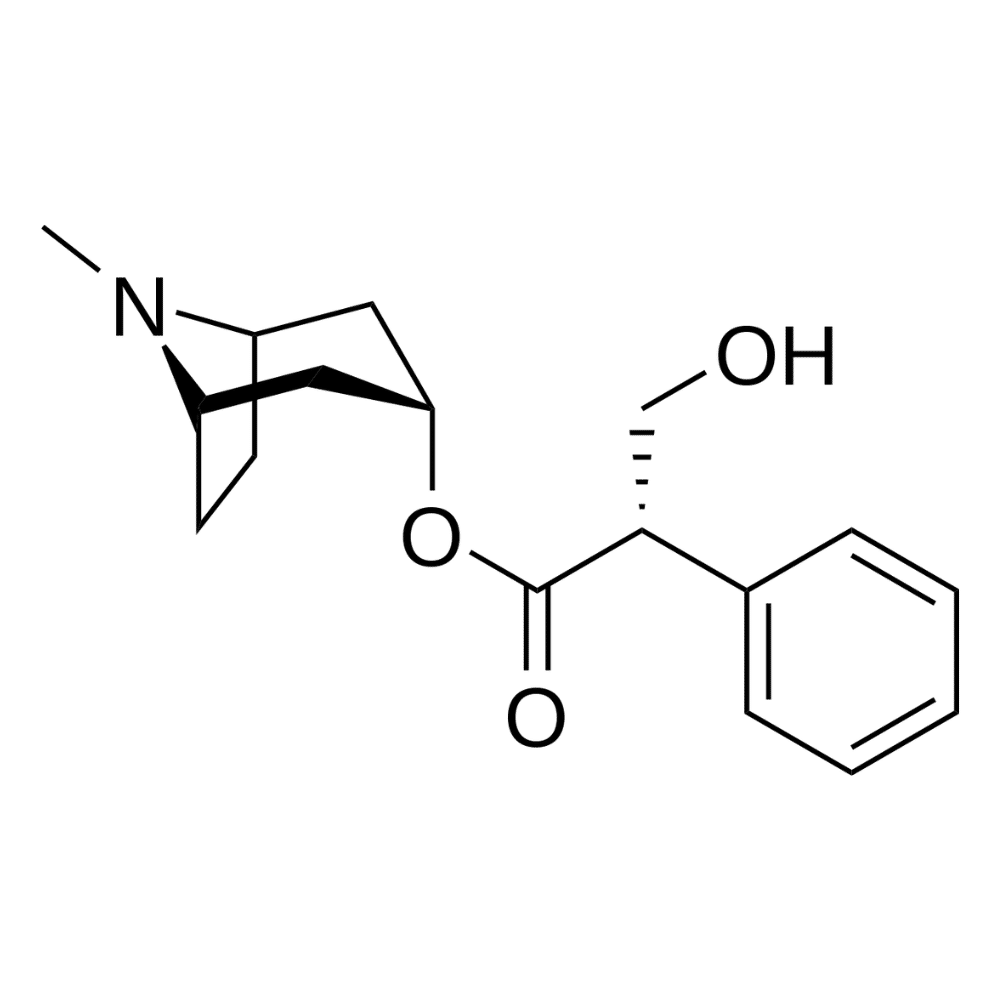
What Does Brugmansia Feel Like?
In a word — terrible. The tropane alkaloids contained within the seeds inhibit the parasympathetic nervous system (through acetylcholine).
Anticholinergics are powerfully hallucinogenic but cause many uncomfortable and dangerous physical effects. Also, the frightening experiences endured from their psychological effects can leave lasting trauma.
The Physical Effects of Brugmansia
The physical toll of brugmansia is far greater than many other drugs. It belongs to the anticholinergic class — or drugs that block the ACh neurotransmitter. Brugmansia side-effects are not unlike datura or mandrake.
There’s a famous rhyme summarizing the effects of anticholinergic plants like brugmansia:
- Blind as a bat (blurry/fuzzy vision)
- Dry as a bone (dehydrated, especially in the mouth)
- Full as a flask (can’t urinate)
- Hot as hell (feverish)
- Red as a beet (flushing)
- Mad as a hatter (delirium)
- Tacky as a leisure suit (tachycardic — or having a high heart rate)
Many of these symptoms are enough to justify a hospital visit if they become severe enough. Even if they don’t, having to experience them all at once can be pretty taxing.
The reason for these effects comes down to the blocking of a neurotransmitter called acetylcholine, which is responsible for many bodily functions [8].
Acetylcholine is a key component of the parasympathetic nervous system (PNS). This system regulates the “rest and digest process,” which is the opposite effect experienced during flight or flight (stress response). When the PNS is inhibited, it leads to overactivity of the sympathetic nervous system (increased heart rate, elevated body temperature, dilated pupils, muscle tension). It also causes people to hallucinate.
It’s important to note that these effects can be deadly.
The Psychological Effects of Brugmansia
For the common psychonaut, tales of intense visuals and hallucinations are enough to sell the experience. However, the dark side of brugmansia makes it a poor choice for people looking to experiment. The effects of this plant are rarely fun and often leave lasting psychological damage to people who have used it.
Take it from renowned psychonaut Terrance McKenna who spoke in his book True Hallucinations. He once said of the related plant, datura, that:
It’s very hard to keep control of it. It erodes the core processes of the self so that you lose track of who you are, where you are, and what has happened… I just felt it was telling me that I’m not for it… It was clearly not for me.
But then I observed other people. And they didn’t seem to be handling it too well either.
While many people enjoy the feeling of intoxication and altered states of consciousness, delirium is not fun. Your ability to interpret the environment becomes null, and your actions afterward are entirely unpredictable.
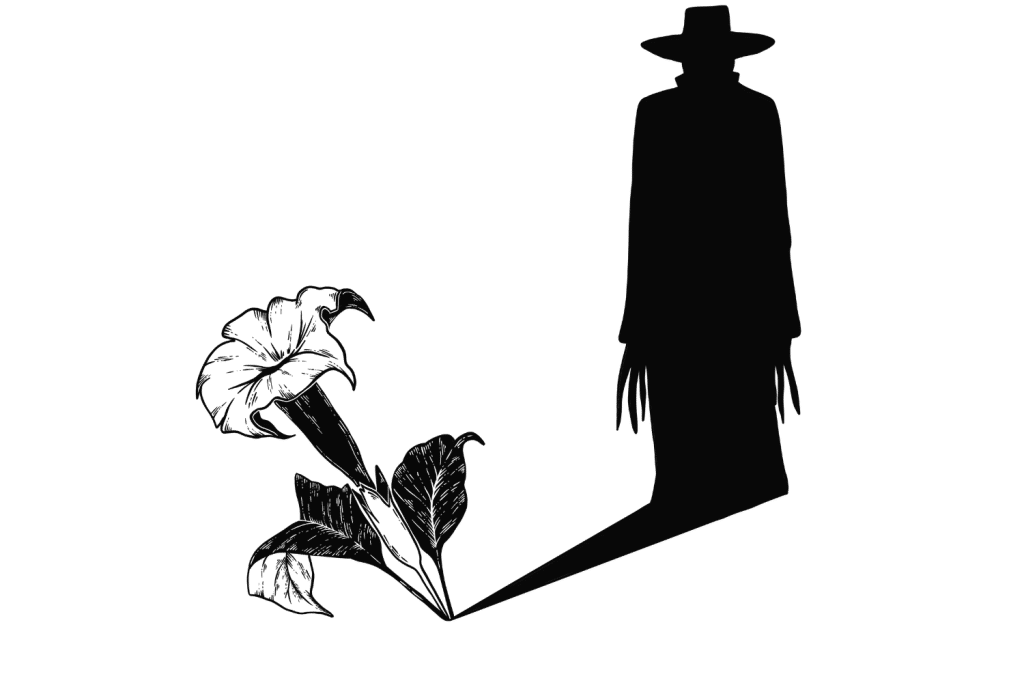
The plant also causes intensely realistic hallucinations, which almost always take on a horrific flavor and are notoriously uncomfortable.
Having a reliable tripsitter to stay sober and sit with you while you’re on drugs is always a good idea, but it’s imperative with brugmansia. Any attempt to take this drug alone can be extremely dangerous.
Related: Tripsitter Safe Tripping Guidelines
Is Brugmansia Safe?
No. The lethal dose of the plant is not far off from the recreational dosage.
Meaning that to get enough of the drug to feel it, you have to experience a nearly lethal level of poison. Granted, many have experimented with this plant and done so safely, but it’s impossible to know the strength of each dose when the alkaloid content of each plant can vary so greatly.
Brugmansia Risk Reduction
As with all psychedelic drugs, users can cut down a lot of the risk by educating themselves and using responsible practices. While the experience of this plant is often terrible, u/HermesTrismegistus1 recently cast doubt on the responsibility of the drug itself in a Reddit post.
Reviewing the related plant, datura, this Reddit user went through all of the trip reports that Erowid marks as “trainwreck” experiences. In doing so, he made some interesting observations on similarities.
Namely, he points out:
- At least 96% did not properly test with smaller dosages beforehand.
- 75% of the reports came from first-time users.
- At least 66% were college-aged or below.
- While 64% of cases ended in hospitalization, only 26% seemed to require it.
Finally, the poster casts doubt on some of the reports, which seem to exaggerate or fabricate experiences. Does this mean that brugmansia is safe and all of the concern around it is unwarranted?
Almost certainly not. While it is a drug that some may have approached responsibly and learned to use properly, the very real risks are always present and will forever make it unsafe.
Brugmansia vs. Datura
We’ve mentioned datura a few times throughout this article as a stand-in for brugmansia, and it’s important to note how similar these two are. They have many of the same alkaloids, both operate as deliriants, and are toxic in large amounts.
When looking at subjective reports that compare the two from well-versed users, it becomes clear how similar they are. Much of the language revolves around different “feelings” instead of experiences.
Specifically, many reports claim that the “feeling” from brugmansia is more intense or violent.
The Encyclopedia of Psychoactive Plants by Christian Rätsch lists brugmansia as more toxic — but this hasn’t been confirmed. Both plants vary widely in alkaloid content depending on growing conditions, the time of the year, and various other factors. Some samples are very strong; others are weak — it’s difficult to compare which is more dangerous because of this phenomenon.
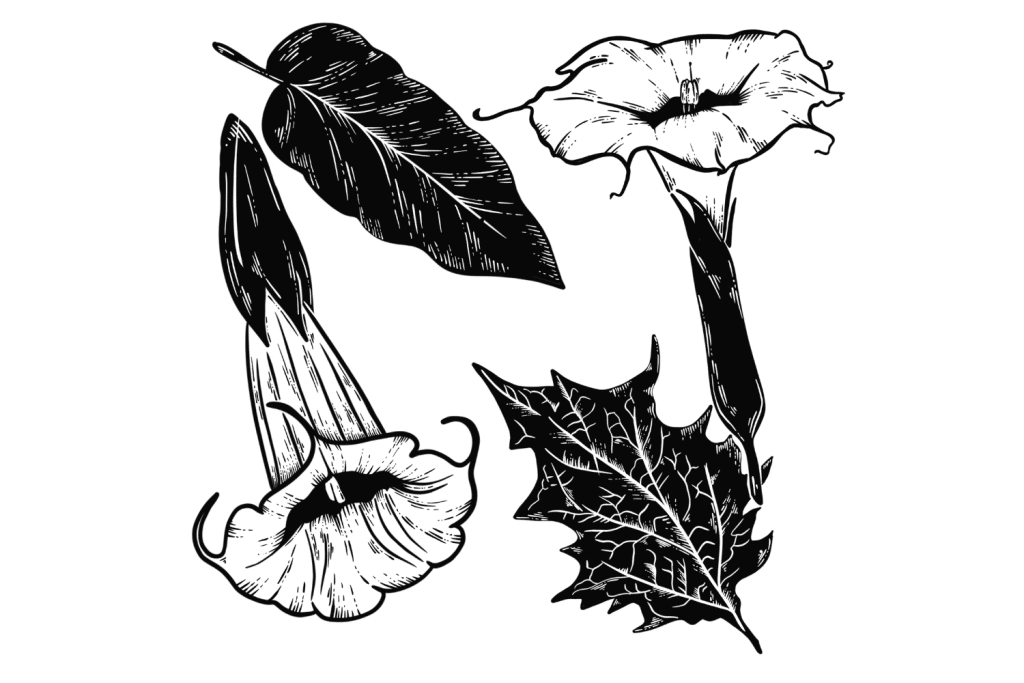
All things considered, the plants are very similar in their effects, mechanisms of action, and even traditional uses. They even look alike and share many of the same nicknames.
Brugmansia vs. Datura Comparison Table
| Brugmansia | Datura | |
| Genus | Brugmansia | Datura |
| Family | Solanaceae | Solanaceae |
| Growth Pattern | Fast-growing flowering tropical shrub | Herbaceous annual |
| Part Used | Leaves, flowers, and seeds | Usually, seeds, leaves, and flowers |
| Active Ingredients | Scopolamine, hyoscyamine, and atropine | Scopolamine and atropine |
| Distribution | Tropical regions in South America | Central California to northern Mexico as far east as Texas. |
| Quality of Effects | Deliriant effects like a waking dream | Deliriant effects like a waking dream |
| Legality | Legal | Legal, though some states have passed legislation to control Jimsonweed |
Traditional Use of Brugmansia
There is a rich history of shamanic use of brugmansia throughout South America, where the plant grows naturally.
One study explored the use of brugmansia with shamans in Northern Peru who use the plants for various reasons [9].
The main uses the shamans mentioned included:
- Divination — Either with the San Pedro cactus or alone, this plant was a common tool for seeing the future and deciding fates.
- Topical therapeutic use — Depending on the need, a shaman would apply brugmansia to different areas of the body.
- Initiation – Specifically, initiation of “shamans chosen on the grounds of psychophysical characteristics.”
- Curing Sickness — This is often a last-ditch effort since the effects can be serious.
- Black magic rituals – Namely, curses.
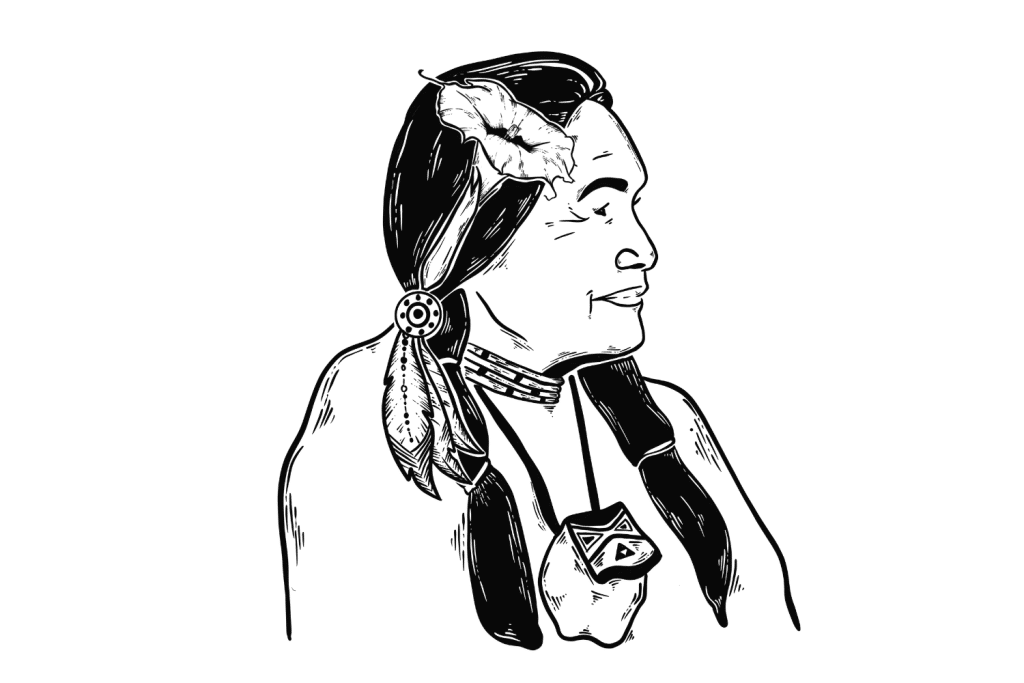
There are reports of the plant being a method of punishment for children. Given the belief that the plant could help the user commune with their ancestors, one has to wonder if the intent was to allow the great patriarchs of the past to scold the children.
Brugmansia FAQs
1. Is Brugmansia a Psychedelic?
Deliriants are a subclass of hallucinogens, so by definition, yes. But confusing its effects with other psychedelics would be a terrible mistake.
While most psychedelic drugs cause hallucinations, the ones that a deliriant like brugmansia would cause are very different. Aside from typically having a darker nature, the one experiencing them will often act out their dream-like state.
User experience reports share frequent commonalities of arrests, hospitalizations, life-threatening situations, and other scary events.
2. Is Brugmansia Legal?
Yes. This plant is legal in all parts of the world.
Part of the issue with many of the irresponsible uses of the plant is the fact that people are using it as a “legal high.” In doing so, they are comparing a dangerous plant with dark tendencies to happier experiences like LSD and psilocybin.
In a world where all drugs are legal, likely, there would still be a few people that approach this plant and learn to use it respectfully. What would reduce, however, is the number of people that come to it in ignorance, looking to replace a drug they aren’t allowed to get their hands on.
3. Can You Smoke Brugmansia?
Yes! Many claim that the leaves are a much more subtle way to consume the plant.
Depending on the report you read, it may or may not still produce hallucinatory and deliriant effects on a smaller scale. As always, it’s important not to overdo it and to start with a low amount and slowly build your way up.
No matter your mode of ingestion, brugmansia is a dangerous plant that you should always approach slowly.
Final Thoughts: Is Brugmansia Worth the Risk?
At the end of the day, brugmansia is a plant you should likely avoid. Any potential benefit of the effects is grossly outweighed by the issues they may cause.
Do not enter into this experience thinking that it will be like other classical psychedelics. Additionally, do not assume that the plant and the trip will be safe simply because it is natural — plenty of poisonous things exist.
While everyone is free to chase their calling regarding drug exploration, this one is likely best left off the table. Should you feel the call to explore the effects of brugmansia, start with a low amount and slowly build yourself up.
Also, ensure you don’t do it alone, as this plant can make you lose all sense of direction and reality. You’ll need someone by your side to gently guide you back into the house, your bed, or another safe space.
As with all substances, learn as much as possible beforehand, and don’t ever go into an experience blind. Too many “bad trips” find their root in ignorance, a condition that is very easy to cure.
When it comes to brugmansia, however, some of the bad trips come straight from the plant itself.
References
- Petricevich, V. L., Salinas-Sánchez, D. O., Avilés-Montes, D., Sotelo-Leyva, C., & Abarca-Vargas, R. (2020). Chemical compounds, pharmacological and toxicological activity of Brugmansia suaveolens: a review. Plants, 9(9), 1161.
- Corallo, C. E., Whitfield, A., & Wu, A. (2009). Anticholinergic syndrome following an unintentional overdose of scopolamine. Therapeutics and clinical risk management, 5, 719.
- Konar, A., Gupta, R., Shukla, R. K., Maloney, B., Khanna, V. K., Wadhwa, R., … & Thakur, M. K. (2019). M1 muscarinic receptor is a key target of neuroprotection, neuroregeneration and memory recovery by i-Extract from Withania somnifera. Scientific reports, 9(1), 1-15.
- Lochner, M., & Thompson, A. J. (2016). The muscarinic antagonists scopolamine and atropine are competitive antagonists at 5-HT3 receptors. Neuropharmacology, 108, 220-228.
- Theriot, J., Wermuth, H. R., & Ashurst, J. V. (2020). Antiemetic serotonin-5-HT3 receptor blockers. In StatPearls [Internet]. StatPearls Publishing.
- McLendon, K., & Preuss, C. V. (2021). Atropine. In StatPearls [Internet]. StatPearls Publishing.
- Keeler, M. H., & KANE JR, F. J. (1967). The use of hyoscyamine as a hallucinogen and intoxicant. American journal of psychiatry, 124(6), 852-854.
- Sam, C., & Bordoni, B. (2022). Physiology, Acetylcholine. In StatPearls [Internet]. StatPearls Publishing.
- De Feo, V. (2004). The ritual use of Brugmansia species in traditional Andean medicine in northern Peru. Economic Botany, 58(1), S221-S229.

